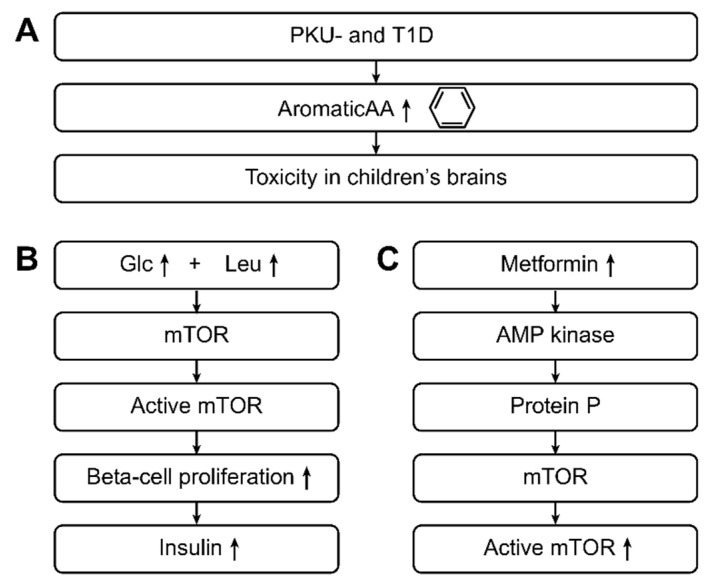Figure 4.
This figure shows the pathophysiological aspects associated with the metabolic changes in type 1 and type 2 diabetic patients. Aromatic amino acids (ArAAs) are toxic to children’s brains, and this toxicity can be observed in PKU- and T1D-positive children [72]. An important pathophysiological pathway is the following: High glucose and high leucine levels lead to the activation of rapamycin (mTOR), and activated mTOR leads to beta cell proliferation and a greater release of insulin [72]. The previous pathway can also be induced by metformin. Specifically, through AMP-kinase and subsequent protein-P activation, metformin leads to mTOR activation, leading to increased insulin levels. Through this pathway, metformin acts as a mild drug in type 2 diabetes.

